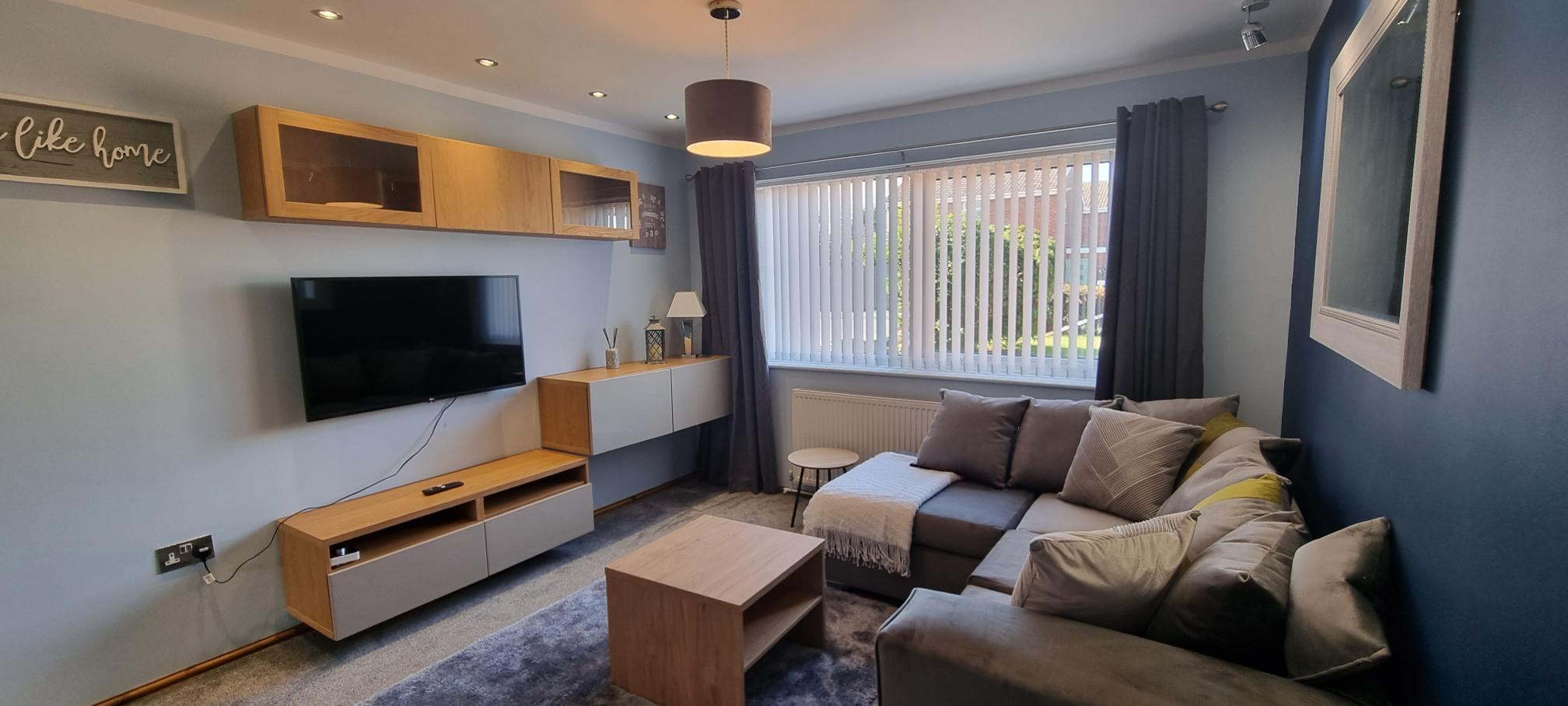Caring for Communities and People (CCP) took a £2.85m loan from SASC in 2020 to buy housing for vulnerable young people. This autumn they bought their final property using this investment. The team at CCP used this milestone as an opportunity to reflect on the impact that social investment has had and what they learnt as they developed their portfolio of owned housing.
Here, the charity’s Chief Executive Officer, Cordell Ray, and Chief Operating Officer, Gareth Edwards, share the lessons learnt about the social investment process.
CCP’s journey of social investment
CCP is based in Gloucestershire and provides supported accommodation services for vulnerable young people aged 16-25 years old – many of whom are leaving the care system. They act as pseudo-parents, giving them essential life skills, training, education, and support to help them eventually live independently.
The charity decided to take on social investment to purchase 16 properties over 18 months to expand its accommodation services and to end reliance on private landlords, giving them greater control over the quality of their properties and how they are used.
The loan, payable over 10 years, is structured to minimise investment risk for CCP and supports any ongoing risk too.
So how did the process go for CCP?
“Overall, the loan was transformative. As soon as we started to buy homes, we were able to have a different dialogue with local authority commissioners. Consequently, we have purchased quality homes and expanded into different regions and have a footprint in South Gloucestershire, Hereford, Worcester, Swindon and Bristol.
Were there challenges for the organisation?
“We started at a very challenging time. As soon as we had identified our first property to purchase, lockdown happened due to Covid. We managed to complete the purchase and then struggled to get contractors.
However, we were fortunate that SASC showed immense flexibility and allowed us to pause the deal. We used this additional time to research properties behind the scenes which meant we could spring into action and complete on properties as soon as we were able.
Thanks to the stamp duty holiday during the pandemic, when we finally could buy properties there was unprecedented demand and competition which was another challenge. This also meant that lawyers and local authorities were also swamped with work, which delayed legal processes and local authorities’ searches too. This also meant that we had to set back our planned completion dates.
During that time, we also realised our beneficiaries’ needs had changed slightly and that some would benefit from living together, with fewer support hours.
We therefore added some larger properties to our portfolio, in addition to the planned single-occupancy homes. This also meant that the initial goal of purchasing 16 properties changed and we bought 13 houses with 17 beds in total. We can now provide some shared accommodation and have more flexibility.
What is the biggest benefit of becoming property owners?
The biggest benefit of owning properties was our ability to give people more permanence in their homes which was so important to them. When we worked with private landlords although some were very good, others ended tenancies suddenly, which was very disruptive for the young people.
As mentioned, it also enabled us to approach commissioners in other regions who wanted us to prove the model before working with us.
What are your key learnings and tips for other borrowers?
A key learning was budgeting and contingency planning. We had several properties that did not complete, and we had not budgeted for this, so it added to our costs. Next time we would have an amount set aside for this.
The refurbishment costs were also higher than anticipated, and the increase in house prices also added to our budgets, so we would advise borrowers to always build in flexible costs.
Another key tip would be to involve a project manager with a background in building/contracting/surveying from the outset who would be dedicated to the project and ideally this role would be funded through our next loan.
We have a larger facilities team now, so we could factor in more of their time and try to do some work in-house, but the financial arrangement would need to factor this in.
Other points of note were that our business model completely changed along the way and SASC was understanding of this. But next time, we will build in more flexibility to ease mobilisation and make sure we are future-proofed.
Also, while previously, we had talked with SASC about an average property price we were seeking, our business model had changed and we have a range of properties available which requires different levels of support services, so in the future we would budget for an average cost per bed.
Throughout the project, we drew up a process and refined it each time we completed on a property or found a better way of doing things. Now, we have a very robust process, and we are working with lawyers and contractors we know and trust.
We would be happy to share our learnings with others as we feel we would have benefitted from having a ‘mentor’ who could have supported us.
Looking back, it would also have been helpful to have a forum to talk to other organisations that had also had the investment. This would have meant we could have shared best practices or barriers/issues and been a useful support network (especially during the pandemic).
SASC’s response
In 2022, SASC ran its first borrower survey. Several of the points raised by the team at CCP were also raised by other borrowers. These ideas will be incorporated into the way SASC works, allowing our investees to collaborate and share their learnings.
We are delighted to be supporting charitable organisations like CCP, which offer housing and high-level support to vulnerable people in the UK. We have now invested in over 20 similar organisations, and we hope to harness their skills and expertise to help other charities we invest in in the future.


